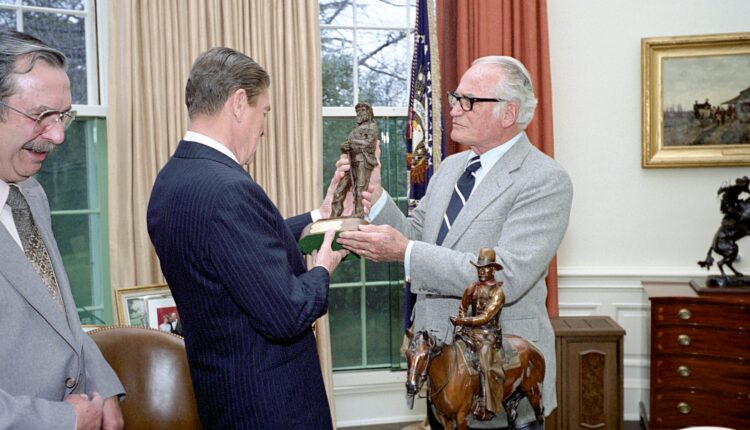
(Photo courtesy of Find a Grave)
For most people, the idea of finding a coffin after digging up your background is the stuff of nightmares. But for a handful of Tucson residents, that nightmare became a reality.
One Tucson man was digging in his backyard when he found two coffins. Yes, you heard that right. The upper coffin contained the remains of a child and the lower contained the remains of an adult male. They were both buried in Tucson’s historic Court Street Cemetery. (You can learn more about this specific incident and the history of this cemetery by reading this article.)
We spoke with Homer Thiel, a project director for Tucson-based Desert Archaeology, Inc. (Editor’s note: Thiel is not related to the billionaire Peter Thiel. We checked.) who wrote that piece and examined those remains.
“Those two people obviously died from some very contagious disease. And then we had one other child that had a fracture of the forehead and it looked like perhaps a horse had kicked the child,” says Thiel.
This is obviously a remarkable if not scary experience. Thiel says most people are actually interested in what happened.
“So the guy that who has a little child in his sidewalk area, and then there was this person below, he was a little bit freaked out, honestly,” he says. “Actually there was a podcast last year where he talked about he thought there were ghosts coming to his house afterwards. Most of the people are just interested in it.”
Although we started with an anecdote about a body found by a homeowner, Thiel says most of the bodies have been found in public alleys or streets. One project involved realigning a sewer pipe. The other was a gas line replacement. Just two were reported in a backyard, according to Thiel.
The history of Tucson’s Court Street Cemetery
Tucson was home to Court Street Cemetery, a historic cemetery that was in operation from 1875 to 1909. Some of its residents are still in the ground when they were buried there over 100 years ago and are dug up today.
According to the article we mentioned above, over 50 burials have been discovered since the 1960s. The cemetery was eventually sold to the City of Tucson and is now in a neighborhood that has a hotel, apartments, and homes. Specifically, it’s bordered by W. Speedway Boulevard and W. 2nd Street.
Thiel told us the backstory: In 1875, The Village Council for Tucson realized that the railroad was going to be going right through a town cemetery, so the council constructed a new cemetery called Court Street Cemetery. The graveyard was roughly eight city blocks: The eastern half of the blocks was for the Catholic church, and the western half of the cemetery was for the city, county, or public plot. That’s where protestants and paupers were buried. The other plots were given to the Jewish community and various fraternal groups.
A database constructed by Thiel estimates about 7,000 to 8,000 people were buried there. He estimates about half of the people buried there were exhumed to make way for the railroad.
The Evergreen and Holy Hope Cemeteries replaced the Court Street Cemetery. The Evergreen Cemetery charged to move the coffins. As a result of this, some people couldn’t afford to relocate their relatives, and they were left in the ground. People who had flocked to Tucson with tuberculosis and later died without many friends or family nearby didn’t have tombstones and were also likely left. Thiel tells us that many times, the coffin was just emptied of the bigger body parts with the hands, feet, and miscellaneous bones left behind.

What’s an excavation like?
Our (somewhat morbid curiosity) got the best of us: We just had to know what it’s like to dig up a coffin. Thiel says the wood coffins are usually rotted. They can be as shallow as six inches and as deep as six feet under the ground. If two people are working the site, they can usually remove a historic burial in one day. Two days might be needed if the coffin is buried deep in the ground.
“In my career, I’ve exhumed many people throughout the time I’ve been an archaeologist,” says Thiel. “What we find are the things and clothing that don’t usually rot like the buttons, metal parts like suspender buckles. Sometimes you find bits of shoes because the leather will preserve. And once in a while, you find just the remnants of the cloth. Most of the cloth has decomposed.”
He told us that the bones are typically well-preserved. Bones are dug up and then sent to Desert Archaeology’s lab where Thiel examines the non-bone items like buttons or objects buried with the body. Everything is photographed. The photos are sent to a man who has done his Ph.D. dissertation on coffin hardware, and he will find matching pictures and coffin hardware catalogs from that time period.
Next, the bones are sent to the University of Arizona. An osteologist or a doctor who specializes in human bones and his students will take a closer look. If they can, they’ll identify the biological sex of the person as well as their age of death, and look for pathological conditions like cavities in the teeth, broken or healed bones, or other evidence of disease.
Before any work is even done, there’s a specific procedure that must be followed.
“Arizona State Museum has done what’s called a burial case agreement,” says Thiel. “And that tells us what we can and cannot do and where the remains and the associated artifacts go to after the project is completed, the report is written. So people that are found in the Catholic cemetery are re-buried in the Holy Hope Cemetery.”
A few other bodies are at the museum, and it hasn’t been determined where they’ll wind up. Holy Hope has an in-ground vault where the Court Street Cemetery remains are laid to rest. Bodies are not cremated since that costs extra money. The reason why they’re re-buried is that their descendants may still be living in Tucson.
“We cannot identify a specific person but Los Descendientes is the descendant community, and they prefer to have them buried again in a Catholic cemetery,” he says.
For the most part, the bodies can’t be identified. He estimated he may have possibly identified one person out of a fraternal group that was buried at the Court Street Cemetery.
“But generally, you can’t because there are so many hundreds of people of a certain age like men between the ages of 40 and 50. There are hundreds, and the only way we could tell is through DNA studies. And nobody has done that yet,” says Thiel. “It’s expensive to do the DNA stuff.”
Archaeologists also typically can’t tell how the person died. For most of us, looking into an old coffin would probably be a little strange and scary. But for Thiel, it’s a way to learn more about another person.
“I do a lot of genealogical research. And so I’m interested in people and the ultimate thing that you can look at is somebody’s grave. And looking at how they were treated and what clothing they wore and the biological information from the skeletons tells you something. And it’s a respectful thing,” he says. “You very carefully document things. You treat the remains with respect. Eventually, most of them will be re-buried.”
For him, exhumation is just a part of his job.
“It’s part of being an archaeologist, having to do with human remains. You want to do it in the most respectful way possible because they are somebody’s relatives,” says Thiel. “And even if you can’t identify who they are, they still they were a person. They had hopes and dreams and lived lives. And so I always think when I’m exhuming someone wondering: ‘Did they have a good life today? Did they have a nice time?’”
What happens when a body is found
Superior Court of Arizona in and for Pima County has protocols that have to be followed if a burial is found. This can include notifying possible descent communities like the Apache and the other native tribes. Everything must be packaged in organic materials. The Native Americans don’t want artificial materials like plastic touching the bones of their ancestors, Thiel explained, and the area is also surrounded by a fence to keep people from watching.
What can we learn from excavations?
“You can learn funerary practices of the time period,” he says. “And when you combine it with documentary records, you can sort of get an idea of what it was like to die in that time period. And how people treated their dead and how that has changed through time.”
In the Catholic half of the cemetery, coffins can contain religious iconography like cross-shaped handles or religious ornaments like an image of a woman clutching a crucifix he says. In the other half, you might see words like “at rest” or bluebird knobs on the coffin. It tends to be more secular imagery and symbols.
Current Court Street Cemetery
Thiel estimates that thousands of people are still buried and lying underneath the ground where homes, apartments, and a hotel currently stand. In October of 2016, a burial was discovered.
One of the most remarkable things about this is just how common it is. Two other cemeteries in Tucson were also built over. For example, when the new Pima County Justice Court was built, over 1,100 graves were removed before construction started. The other cemetery is underneath the street downtown and nearby sidewalks.
“It happens everywhere. There’s a similar situation in Phoenix and out on the East Coast. There are archaeology companies who specialize in removing and moving old cemeteries,” he says. “Oftentimes, they had been completely forgotten about and somebody starts building something and they come across it.”
What should you do if you find a coffin or body in your backyard?
Hopefully, you’ll never have to ask yourself this question, but in the event that you do, here’s what you should do:
- Call the police. This is done to ensure a murder victim is not buried in your yard. If it turns out it’s not a murder victim, the police know who to contact at the Arizona State Museum.
- Once the police rule out a murder victim, you can contact the Arizona State Museum yourself. The staff will know what to do next.
This article first appeared on Good Info News Wire and is republished here under a Creative Commons license.
READ MORE: Tucson’s top trails to trek this year

The 10 best movies set in Arizona
From action and comedy to thrillers and heartfelt dramas, these 10 movies set in Arizona capture everything there is to love about the Grand Canyon...

6 influential women who shaped Arizona history
From breaking glass ceilings to championing for the rights of marginalized communities, these women’s stories are worth sharing. The history books...

7 untold stories about the Grand Canyon
Legends, myths, and conspiracies all shroud the Grand Canyon in mystery. While there are many popular stories to "gorge" yourself on, these seven...

Phoenix’s secret mob history: From assassinations to ecstasy rings
We’re unpacking Phoenix’s strong ties to the Mafia to explore an underworld many know little about to this day. When one thinks of mob cities in...





